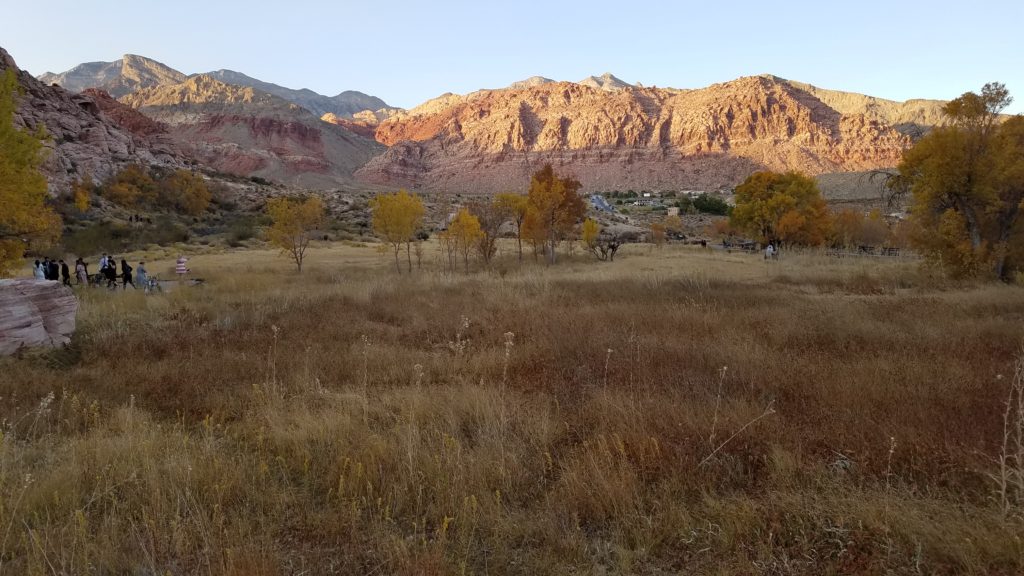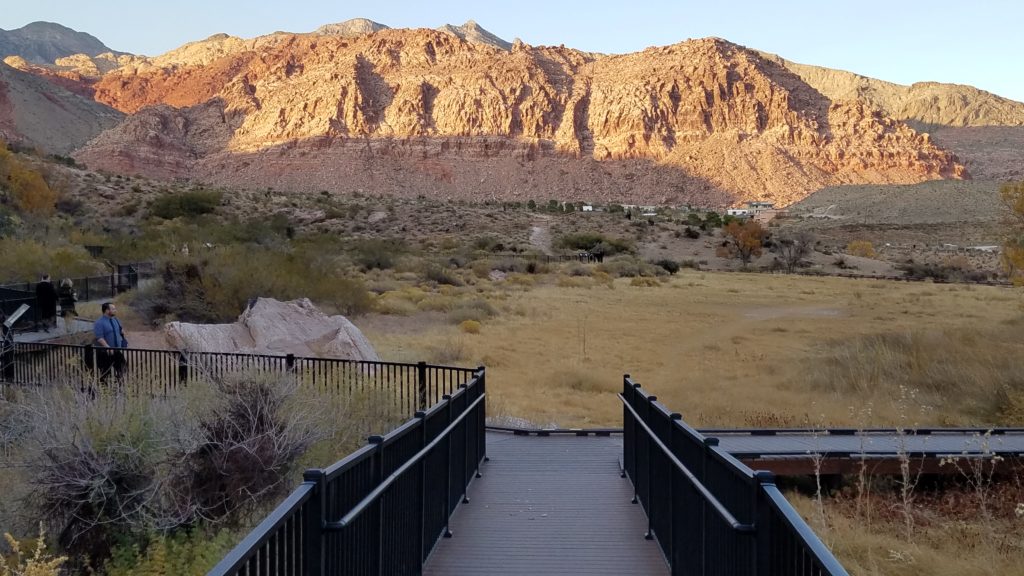
FEATURE — The Las Vegas area is known for its human-built environment — the glitz and glamour of the Las Vegas Strip and other building behemoths like the World Market Center closer to its revitalized downtown area.
Many visitors don’t think about visiting natural scenery during a trip to Las Vegas. The mountains east of Las Vegas look like giant dirt clods. They’re not very aesthetically pleasing. To the west, however, is a different story. Mount Charleston rises on the northwest horizon and southeast of it is a gem that many think is National Park-worthy: Red Rock Canyon.
Red Rock Canyon has a lot going for it in the scenery department. The landscape is the result of limestone deposits from an ancient ocean and lithified sand dunes from a later time period that turned different shades of red from iron oxide, or rust. Visitors traversing its scenic drive might have a hard time believing that the entertainment hub and gambling mecca — what many consider the most sinful city on the continent — is only 20 minutes away.
Once the stomping grounds of Southern Paiutes and their ancestors as evidenced by the rock art they left behind, Red Rock Canyon was a place that provided water for Native Americans and later explorers and settlers with its numerous natural springs, earning the mountain range the name Spring Mountains.
In the late 19th and early 20th century, the area was primarily utilized for ranching and some farming. In the mid-20th century, locals and transplants started seeing the area as a place of respite because of its majestic monoliths, cliffs and surrounding mountains.
One of the best sources to learn the history of Red Rock Canyon and its environs is the book “Seekers, Saints and Scoundrels: The Colorful Characters of Red Rock Canyon” published by Friends of Red Rock Canyon, a non-profit partner of the Red Rock Canyon National Conservation Area. The book is a compilation of snippets by various authors about important locales in the story of this revered place, such as Spring Mountain Ranch, Blue Diamond, Bonnie Springs Ranch and the main attraction: the striking red rock ridges along its Scenic Drive.
Spring Mountain Ranch
What is now Spring Mountain Ranch, which went through a string of famous owners later on in its history, was first known as the “Old Williams Ranch” or the “Bill Williams Ranch.” Famous trapper William Sherley Williams (1787-1849), for whom Williams, Arizona is named, frequented the area. When the fur trade started to dry up, Williams turned to horse thievery and evidence suggests that stolen horses grazed on the site of the future ranch because of the availability of the water from the numerous springs in the area, the Spring Mountain Ranch State Park history page reports. Even though Williams never lived on the property during the era he utilized it, a one-room cabin and blacksmith shop were built.

James Wilson and his partner, George Anderson, filed for the property and moved to the ranch in 1876, which became known as “Sand Stone Ranch in Cottonwood Canyon.” Anderson later left the ranch to go into the saloon business, leaving behind his Native American wife, Annie, and their two sons, Jim and Tweed. Wilson later adopted the boys as his own.
The Wilsons earned their living mainly through cattle ranching, but Jim Sr. did dabble in prospecting as well in raising sheep and hauling ore. Jim Sr. died in 1906. Four years before his death, he deeded the ranch to his adopted sons, who years later fell into financial difficulties. That resulted in their childhood friend, William George, bailing them out by paying off the mortgage they had on the ranch and providing a covenant as part of the sale that the two Wilson sons could live on the ranch for the remainder of their lives. Each brother received five acres to live on as part of the deal, Linda McCollum wrote in the book “Seekers, Saints and Scoundrels.”
A successful furrier from California, George had interesting plans for the ranch. He built a small home for his family on the ranch and enlarged the orchard. Evidence suggests he also planned to raise chinchillas. George only lived at the ranch for two years because his business kept him away.
In 1944, George leased it to Chester “Chet” Lauck of “Lum and Abner” radio fame. Lauck bought the ranch outright four years later. After purchasing it, Lauck renamed it the “Bar Nothing Ranch.” The ranch became the Lauck family’s retreat from their busy Los Angeles life. The family built a sandstone home, which is now the park’s office and visitor center. They also built a boys camp but operated it for only two seasons.
The Laucks sold the ranch to German actress Vera Krupp in 1955.
“Vera renamed the ranch Spring Mountain Ranch and hoped to raise a strain of white-faced Herefords and Brahmas,” the state park history page recounts.

One of the more interesting stories about the ranch during this period was the theft of Krupp’s valuable diamond.
“On April 10, 1959, as Vera and ranch employee Harold Brotherson ate dinner, three men forced their way into the main house, stole the 33.6-carat blue-white diamond and fled. It was recovered six weeks later in New Jersey,” the history page explains.
While she lived at the ranch, Krupp made various improvements, including adding a swimming pool and a bedroom with a secret passage, a guest house, and a kennel for her Great Danes. She moved to Bel Air in 1964 due to poor health and sold the ranch to Howard Hughes in 1967 for $625,000.
Hughes invested heavily in the Las Vegas area around the time he bought the ranch. At one time, he owned several casinos, vast tracts of undeveloped land and over 700 mining claims, the state park history page reports. Hughes became a recluse, mostly holing up in a room in the Desert Inn, one of the hotels that he owned. He died in 1976.
Hughes reportedly never even set foot on the ranch, which was mainly used by his employees. He sold the ranch to business partners Fletcher Jones and William Murphy in 1972. The duo wanted to develop the site into an equestrian-oriented residential neighborhood, but public outcry prompted the Clark County Planning Commission to stall their rezoning application, which eventually resulted in it becoming a State Park in 1973.
It was listed on the National Historic Register in 1976.

Blue Diamond
What is now Blue Diamond was once a stopping place on the Old Spanish Trail known as Cottonwood Springs, which apparently was a name given to other locales since cottonwood trees grew near many of the springs in the area.
Blue Diamond made its mark as a gypsum mine. In 1924, the Blue Diamond Materials Company of Los Angeles bought what was known as the Buol Gypsum Deposit on the hill northeast of Cottonwood Springs. The name was in reference to the famous blue diamond, which became known as the Hope Diamond after famous British gem dealer Henry Philip Hope. The company, renamed the Blue Diamond Corporation, leased the Cottonwood Ranch from the railroad and in 1941 began building a company town to provide housing for employees, McCollum wrote. As the years progressed more and more housing was added, the village was laid out in the shape of Nevada.
The village included a small frame schoolhouse, a post office, library, community center, swimming pool and a village market that became the community gathering place. In essence, the mining company served in the same capacity as a homeowners association would today and maintained the buildings and even residents’ lawns.
The Flintkote Corporation acquired the mine in the 1960s and wanted to divest themselves of the responsibility of maintaining a company town and the village was later sold to the Castella Corporation, who sold the houses and facilities to individuals. With that change, the maintenance of the buildings ceased.
The gypsum mine grew to 2,400 acres with a conveyor belt running from the top of the hill down to the processing plant. The mine shut down in 2004.
Today, Blue Diamond is a small town for those who want to see wide open spaces but enjoy close proximity to a major metropolitan center.
Bonnie Springs
In the late 19th and early 20th century, what is now Bonnie Springs was used as a grazing area for the Wilson Ranch (now Spring Mountain Ranch State Park). In the late 1920s, brothers William (Bill) and Reese Morgan homesteaded stock ranches on unclaimed federal land.
Bill Morgan was a colorful character, an excellent horseman who was a horse wrangler for Buffalo Bill’s Wild West shows and is reported to have doubled for Cody in some performances, Chuck Williams wrote in “Seekers, Saints and Scoundrels.” In 1901, Morgan formed his own show, which he called “Bronco Bill’s Wild West Show,” which employed 150 Paiutes and toured the Midwest and eastern U.S. Not as much is known of his brother Reese, who served as a police officer for a time and also engaged in ranching in other places.
Both brothers maintained homes in Las Vegas and did not live on their ranches full time. Bill Morgan did engage in some moonshining during prohibition and was able to escape arrest.
Both brothers sold their ranch property in the late 1930s and their ranches would fade from the community memory, Williams explained.
Bonnie Levinson, born Bonnie McGaugh in Hollywood to a father who was a stand-in actor and film director and a mother who was an expert seamstress, turned the former Morgan ranches into something extremely memorable.
Bonnie loved to dance and got into ice skating, performing in ice shows across the country, Dan Wray wrote in “Seekers, Saints and Scoundrels.” One of those shows was the first-ever ice show in Las Vegas at the Last Frontier casino. After the show closed, she tried her hand at turkey farming in Southern California, but that endeavor was short-lived.
Upon her return to Las Vegas, a friend took her to what used to be the Morgan ranches near Blue Diamond and she fell in love with it and wanted to purchase it. It took almost a year to find out that a man by the name of Dr. Fortier now owned it. She persuaded Fortier to give her a three-year lease with an option to buy later on and went to work starting to improve the place, Wray explained. She bought the property in 1952.
She had plenty of help in her renovations as Blue Diamond mine workers, as well as Buster Wilson, son of Tweed Wilson, pitched in. The renovations also became an opportunity to make up with her estranged father, who also lent a hand in fixing up the place.
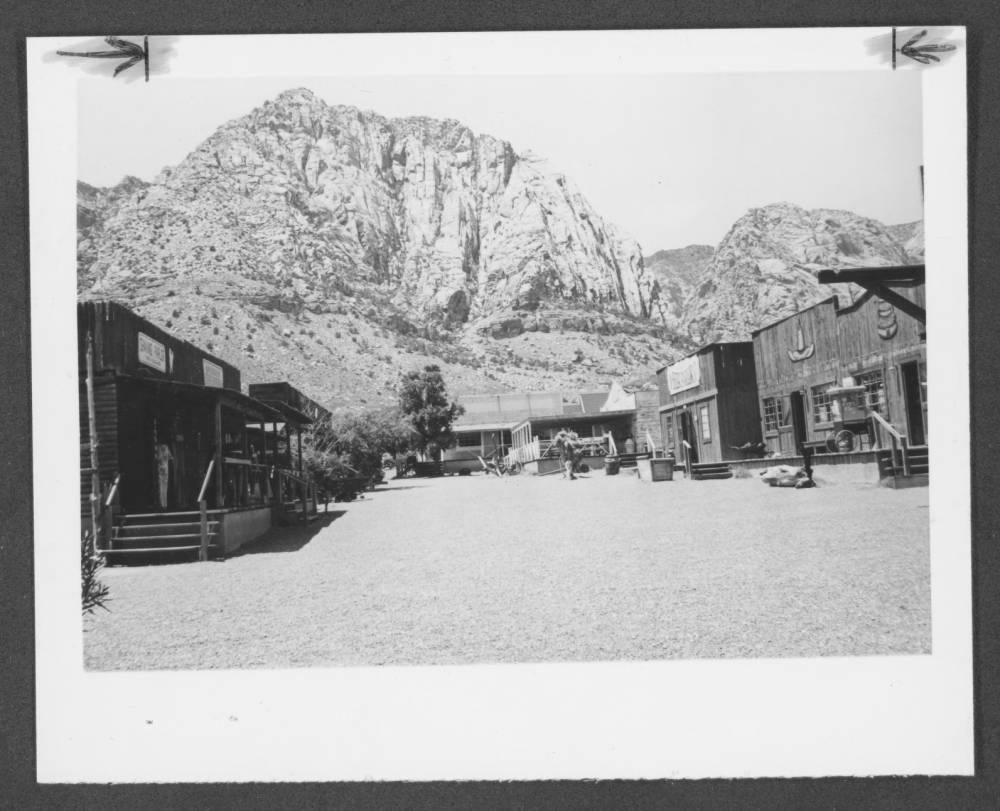
Fortier operated a bar that earned a sketchy reputation and after a year and a half of ownership of the property, friends convinced Bonnie to reopen the bar and helped her get a liquor license. Around the same time, a young man named Al Levinson started coming to the ranch and the two struck up a relationship that resulted in their marriage in 1954.
Bonnie had several offers to buy the property and her husband wanted to entertain them, but Bonnie would have none of it. She enjoyed the property and had a vision for it. For instance, she loved horses and started building up a herd of riding horses.
“Word got around about Bonnie’s horses, and dancers from the Dunes and the Tropicana started to come out,” Wray wrote. “They caused quite a stir with the men as they would ride around dressed more appropriately for their shows than for riding.”
Bonnie started the foundations of a petting zoo and new buildings sprung up on the site in the 1970s for an Old West-themed attraction.
“Bonnie and Al would go around old ghost towns and take measurements of aged buildings so that they could build replicas,” Wray explained. “Al did the building, the plumbing and the electrics, while Bonnie laid the floor, did all the rock work and built tables.”
What developed was Bonnie Springs Old Nevada, which became a replica of the stereotypical Hollywood West that opened in 1974. The site had 45 buildings and regularly staged gunfights and hangings. It also featured cowboys wandering its dusty Main Street to the delight of its guests.
Unfortunately, Bonnie Springs Old Nevada closed for good on March 17, 2019 as the Levinson family sold it to developers who plan turn it into “The Ranch at Red Rock,” a 64-acre, 20 luxury home development. Some of Old Nevada buildings have already been demolished.
Thankfully, neither Bonnie or Al were there to see that demolition. Bonnie passed away in 2016 and Al died in 1994.
Red Rock Canyon protection
In 1961, the National Park Service evaluated Red Rock Canyon for possible inclusion into the NPS system, but decided the area didn’t fit into the organization’s mission. That same year, the State Park Advisory Commission asked that the Bureau of Land Management reclassify and protect portions of Red Rock Canyon, Williams wrote in “Seekers, Saints and Scoundrels.” In 1964, the Sierra Club proposed that the area become a national monument managed by the BLM, which never came to fruition.
In the mid 1960s, the Las Vegas League of Women voters surveyed area residents and heard from approximately 3,500 people, 90 percent of whom indicated that the area needed more outdoor recreation facilities.
In 1967, Secretary of the Interior Stewart Udall approved 62,000 acres to be designated “Red Rock Canyon Recreation Lands” to be jointly managed by the BLM and the Nevada Division of State Parks.
“Over the years, Red Rock Canyon had become a vast dumping ground,” Williams wrote. “Abandoned vehicles and trash had accumulated and sharpshooters had used the vehicles, road signs, empty beer bottles, appliances, Indian rock art and just about anything else that didn’t move as target practice.”
The community stepped up to clean up as Williams reported that in April 1967 over 750 volunteers, both youth and adults, joined Clark County employees to remove over 300 truckloads of litter while at the same time planting six truckloads of native vegetation along the roadways. In November 1967, the Red Rock Cleanup Campaign was awarded the Keep America Beautiful Award.
Vandalism still continued after the cleanup, however. For instance, a limestone cave was discovered in 1970, but knowledge of the cave spread and vandals completely destroyed it.
A significant threat to Red Rock Canyon cropped up in 1980 in the form of potential oil drilling within the Recreation Lands’ 62,000-acre boundaries. The BLM granted tentative approval for oil drilling leases that would cover approximately 30 percent of the park’s area. Public outcry helped in stopping any drilling as did the price of gas dropping after the 1979 oil crisis abated.
“Drilling for oil moved to the back burner and no wells were drilled in Red Rock Canyon within the 10-year time frame specified in the permit,” Williams wrote.
Despite almost allowing drilling in Red Rock Canyon, the BLM wanted to make it a showcase, to be built up similarly to national parks with a grand plan that called for 40 miles of new paved roads, guest accommodations and other developments. That original plan was significantly pared down.
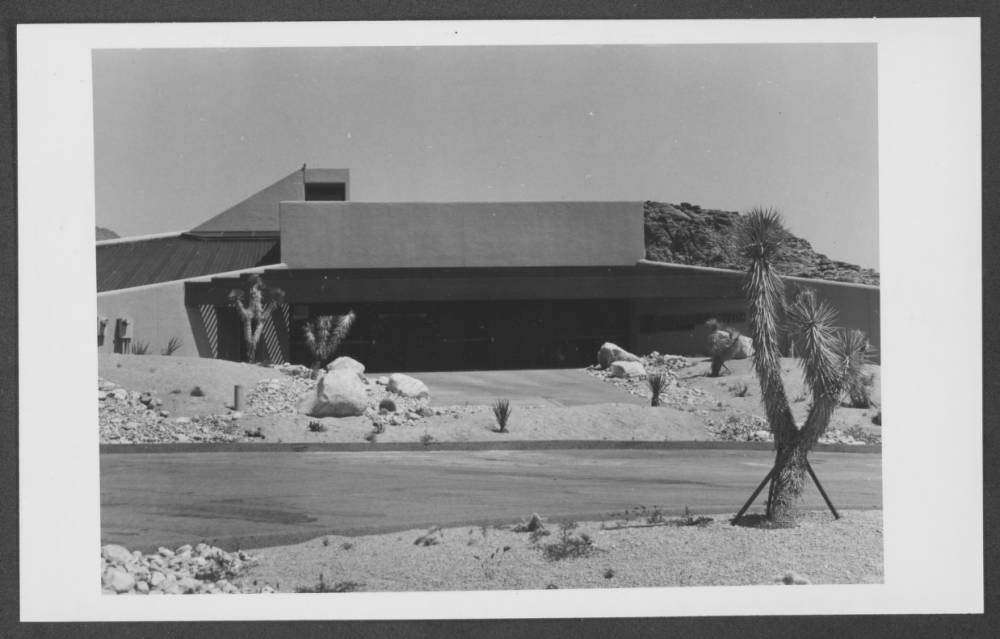
“A visitor center, the first of its kind with the Bureau of Land Management, opened on May 22, 1982 with great fanfare,” Cam Camburn wrote in the book “Seekers, Saints and Scoundrels.” “The BLM staff assigned to the new center was focused on a new era for the agency: interpretive programming, resource education and community engagement.”
Right on the heels of the new visitor center, the organization Friends of Red Rock Canyon (FORRC) was formed in 1984. It was the first of its kind and served as a role model for future, similar organizations formed to help protect spectacular scenery. FORRC and the BLM immediately began a partnership to help sustain the group via fundraising and inspiring the Las Vegas Community to establish an ownership role in preserving Red Rock Canyon by training volunteers needed to maintain and sustain the “Recreation Lands.”
Merchandise sales in partnership with the later-formed Red Rock Canyon Interpretive Association (RRCIA) proved to be one of the first major sources of income. FORRC volunteers were encouraged and trained to be an extension of the BLM staff, Camburn wrote.
With limited hours at first because of lack of funding and volunteers, the visitor center started staying open five days a week in March 1985, which was a good sign that fundraising, training and public relations efforts were going well. By July 1988, the visitor center was open seven days a week.
“The volunteer-driven organization was funding things such as trail signage, front desk remodeling in the visitor center, new carpeting for the Joshua Room and purchasing needed supplies and equipment for the BLM,” Camburn wrote.
In 1990, Red Rock Recreation Lands became Nevada’s first National Conservation Area, and only the nation’s second place to receive such a designation. The Red Rock Scenic Drive was designated a Scenic Byway. These designations increased protection to the area. For instance, it put to rest any thought of ever drilling for oil in the area. The recognition brought even more visitors as Williams reported that in the 12-month period ending in September 1991, an estimated 800,000 people traveled the Scenic Drive, which was a 33 percent increase from the previous year.
Many began to realize that to protect the newly-minted Conservation Area, some development was needed, such as trails and picnic areas.

As one conservationist close to the situation, Howard Booth, put it, as quoted by Williams: “If there aren’t trails, people just wander all over the countryside destroying the vegetation.”
In 1992, the RRCIA began offering a Junior Ranger and other interpretive programs with a small staff. The Conservation Area implemented an entrance fee in 1997 to provide ongoing funds for staff and maintenance expenses.
FORRC has continued to be a vital partner in protecting and interpreting the area, spearheading things such as providing funding for at-risk schoolchildren for educational field trips in the Conservation Area, building boardwalks, removing graffiti, sponsoring community outreach events, leading guided hikes, staffing the information desk and installing fencing along trails to prevent social trailing and to protect Native American rock art, among others.
Development encroaching on the conservation area’s boundaries has been a threat since the 1970s. Public outcry over such development has caused the government to listen in many cases such as when then-Nevada Governor Kenny Guinn signed legislation limiting development near Red Rock Canyon on May 19, 2003. The BLM has also facilitated land-swaps with would-be developers and procured land to serve as buffer zones between residential development and the conservation area boundary.
In 2009, the new Red Rock Canyon Visitor Center opened, which included a gift shop operated by the RRCIA.
“The increased retail space led to a robust increase in sales, allowing the organization to increase interpretive programming, community outreach and aid the BLM,” Crystalaura Jackson wrote in the book “Seekers, Saints and Scoundrels.” “The final phase of the new visitor center construction was the opening of the outdoor interpretive exhibits in April 2010.”
Just like some national parks across the nation have implemented reservation systems, Red Rock Canyon, starting Nov. 3, implemented a timed entry reservation system to improve the visitor experience, trying to ensure that visitors driving the Scenic Drive are not faced with traffic jams and battles for parking spaces.

Visiting Red Rock Canyon
Red Rock Canyon is located approximately two hours southwest of St. George and 20 minutes west of downtown Las Vegas.
The main attraction is the Scenic Drive, which includes many sweeping vistas and hiking options. Another place to explore is the Calico Basin, which includes the Red Springs Trail that traverses a riparian area (due to the spring) surrounded by the red rock ridges via a boardwalk.
Further down Highway 159 are Spring Mountain Ranch State Park, Bonnie Springs and Blue Diamond.
For more information, visit the Red Rock Canyon website as well as the Spring Mountain Ranch website.
Click on photo to enlarge it, then use your left-right arrow keys to cycle through the gallery.

This historic photo shows Jim Wilson and his two adopted sons, Jim Jr. and Tweed, posing in front of their cabin at what was then known as Sandstone Ranch, 1900 | Photo courtesy of UNLV Special Collections, St. George News

This historic photo is a portrait of Jim and Tweed Wilson, whose father operated what was then known as the Sandstone Ranch, early 1900s | Photo courtesy of UNLV Special Collections, St. George News

This historic photo shows the Spring Mountain Ranch home as it looked when owned by Vera Krupp, Spring Mountain Ranch State Park, Nevada, 1960s| Photo courtesy of UNLV Special Collections, St. George News

This historic photo shows the Spring Mountain Ranch home as it looked when it became a state park, Spring Mountain Ranch State Park, Nevada, 1976 | Photo courtesy of UNLV Special Collections, St. George News

This historic photo shows the irrigation pond and a monolith at the Spring Mountain Ranch, Nevada, date unspecified | Photo courtesy of UNLV Special Collections, St. George News

This historic photo shows Blue Diamond Mine employee housing, Blue Diamond, Nevada, 1930s | Photo courtesy of UNLV Special Collections, St. George News
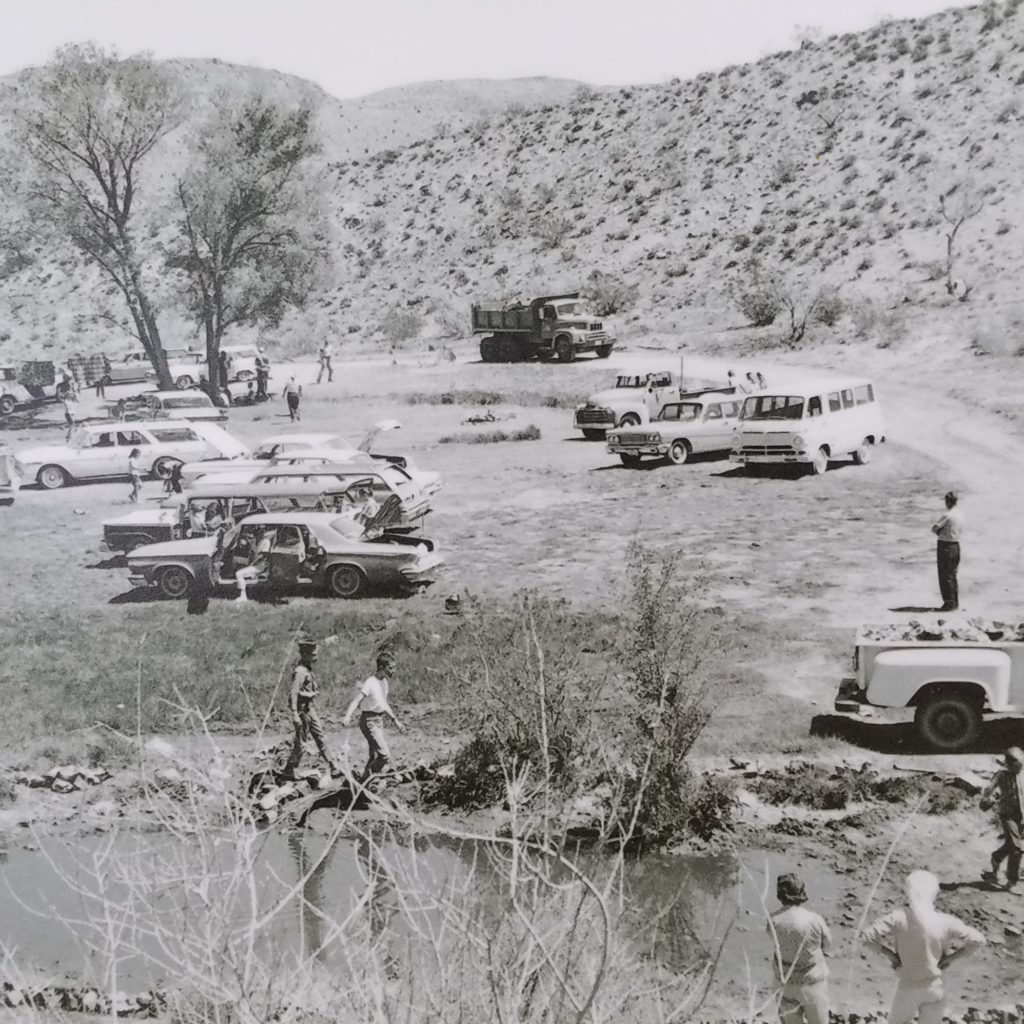
This historic photo of how the Red Springs riparian area in Calico Basin looked in the 1960s is on one of the interpretive signs along its boardwalk, Red Rock Canyon National Conservation Area, Nevada, Nov. 9, 2019 | Photo by Reuben Wadsworth, St. George News

This historic photo shows Old Nevada at Bonnie Springs, Bonnie Springs Ranch, Nevada, 1980 | Photo courtesy of UNLV Special Collections, St. George News
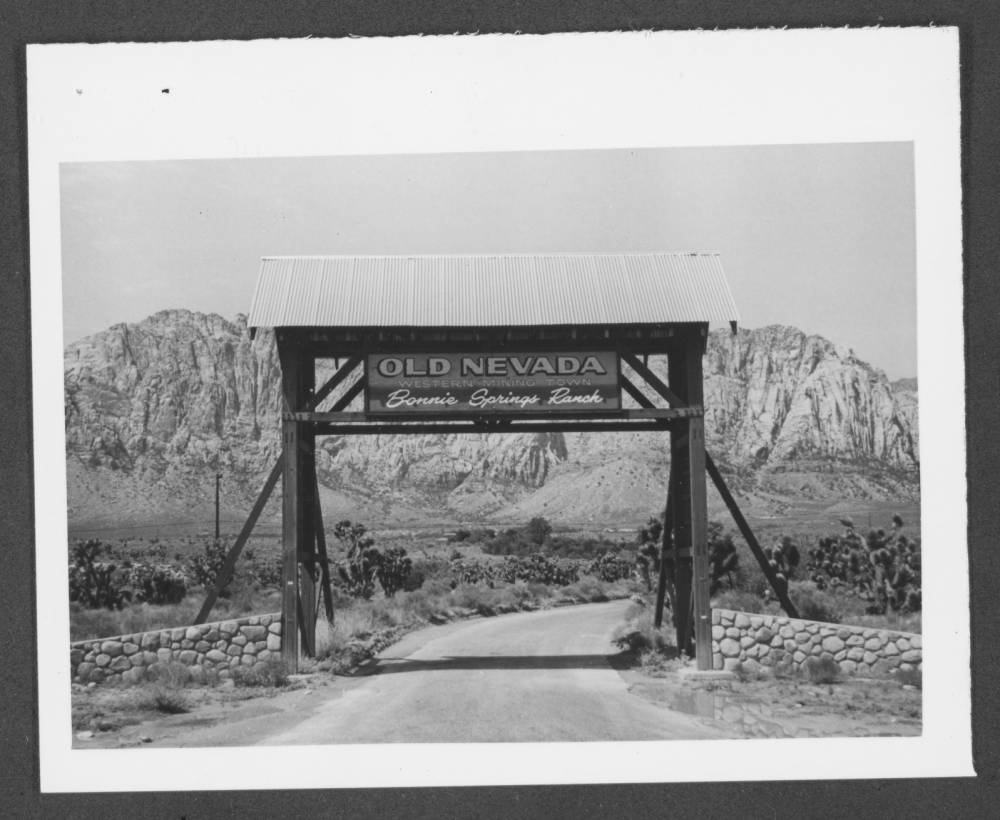
This historic photo shows the Bonnie Springs Ranch Old Nevada welcome sign, Bonnie Springs Ranch, Nevada, 1980 | Photo courtesy of UNLV Special Collections, St. George News

This historic photo shows Red Rock Canyon's first visitor center under construction. It was completed in 1982, Red Rock Canyon National Conservation Area, Nevada, 1980 | Photo courtesy of UNLV Special Collections, St. George News

From the Visitor Center, one can see an expansive view of the ridges, cliffs and vegetation of Red Rock Canyon National Conservation Area, Nevada, Nov. 15, 2020 | Photo by Reuben Wadsworth, St. George News

The trailhead of the Calico Hills Trail reveals a ridge showing how Red Rock Canyon got its name, Red Rock Canyon National Conservation Area, Nevada, Nov. 15, 2020 | Photo by Reuben Wadsworth, St. George News
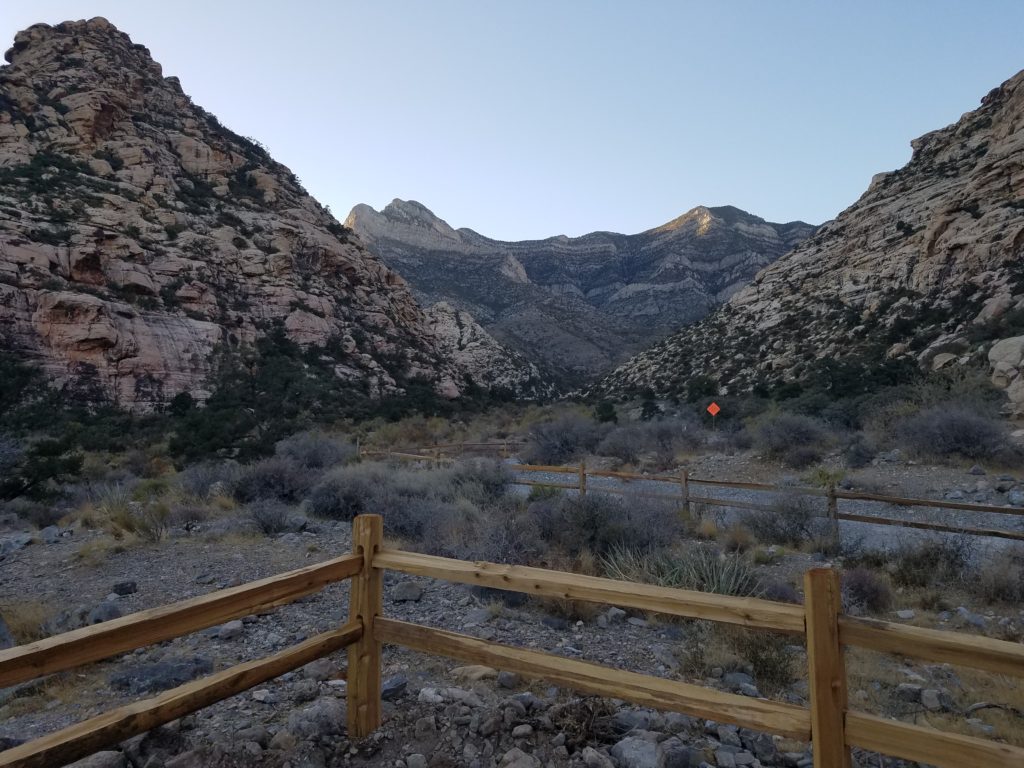
The monoliths surrounding the Petroglyph Wall trail show a slightly different hue than the signature red color caused by iron oxide, Red Rock Canyon National Conservation Area, Nevada, Nov. 15, 2020 | Photo by Reuben Wadsworth, St. George News

The Petroglyph Wall shows rock art of the Native Americans that once made their home in Red Rock Canyon, Red Rock Canyon National Conservation Area, Nevada, Nov. 15, 2020 | Photo by Reuben Wadsworth, St. George News

The Red Spring Trail in Calico Basin is an excellent stroll through a riparian environment surrounded by red rock, Red Rock Canyon National Conservation Area, Nevada, Nov. 9, 2019 | Photo by Reuben Wadsworth, St. George News
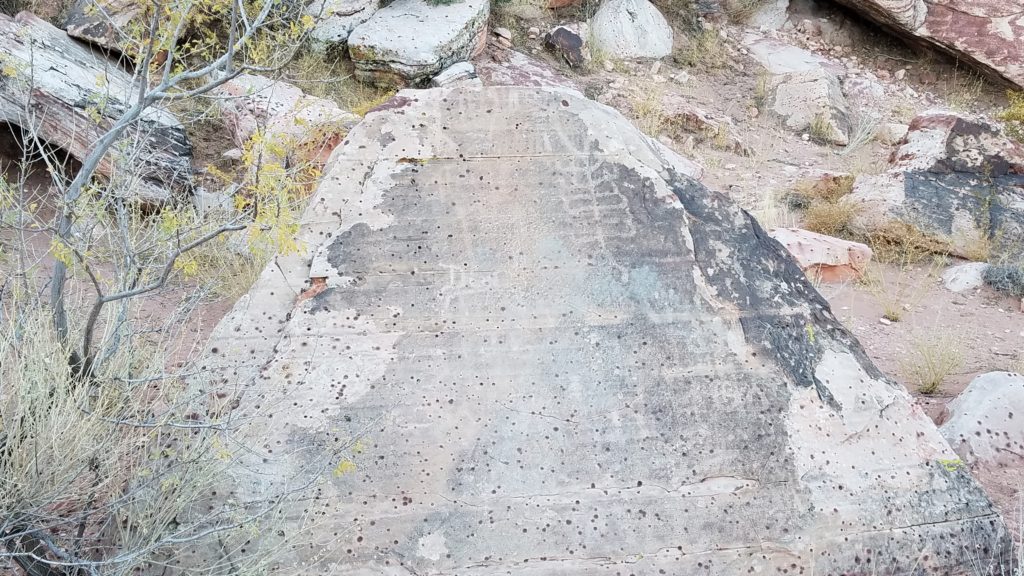
The Red Springs Trail displays some petroglyphs, Red Rock Canyon National Conservation Area, Nevada, Nov. 9, 2019 | Photo by Reuben Wadsworth, St. George News
About the series “Days”
“Days” is a series of stories about people and places, industry and history in and surrounding the region of southwestern Utah.
“I write stories to help residents of southwestern Utah enjoy the region’s history as much as its scenery,” St. George News contributor Reuben Wadsworth said.
To keep up on Wadsworth’s adventures, “like” his author Facebook page or follow his Instagram account.
Wadsworth has also released a book compilation of many of the historical features written about Washington County as well as a second volume containing stories about other places in Southern Utah, Northern Arizona and Southern Nevada.
Read more: See all of the features in the “Days” series
Email: [email protected]
Twitter: @STGnews
Copyright St. George News, SaintGeorgeUtah.com LLC, 2023, all rights reserved.
